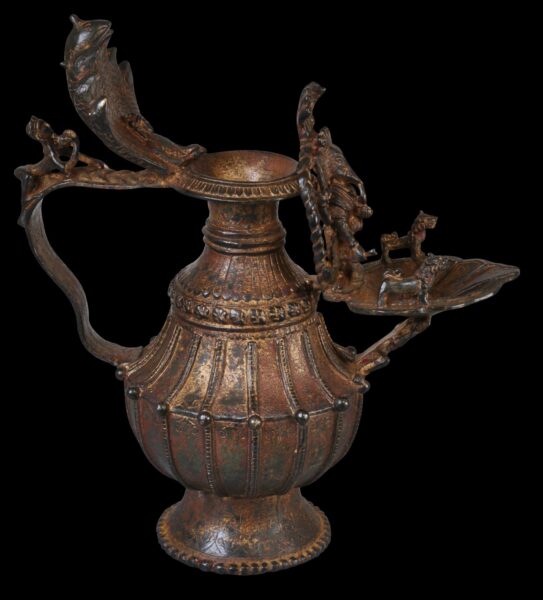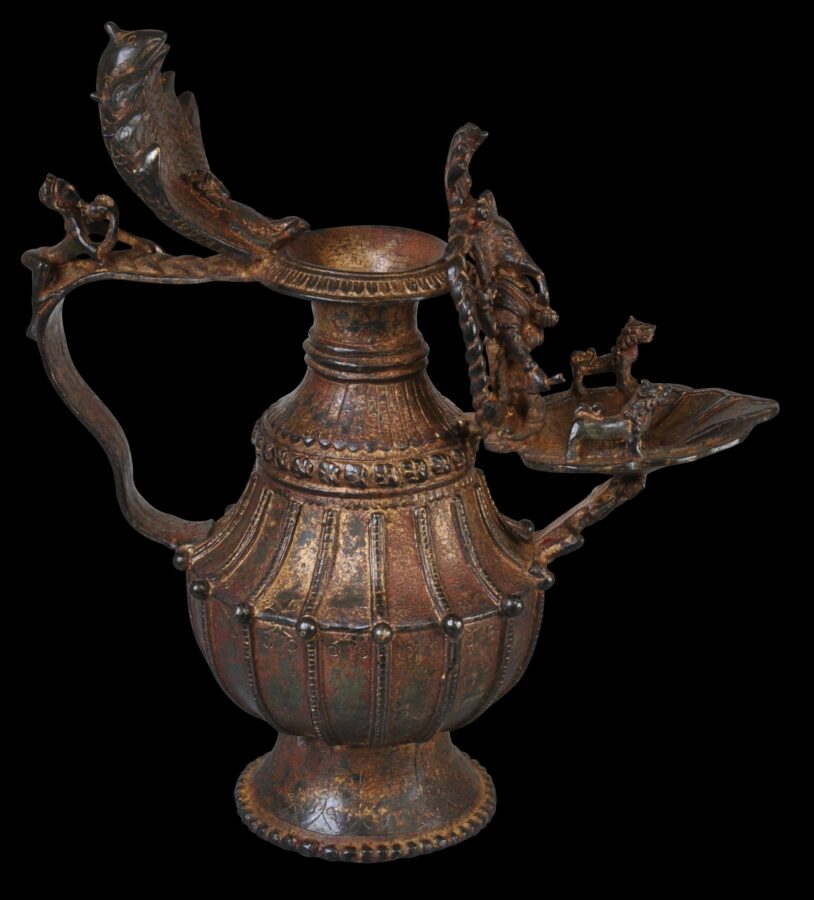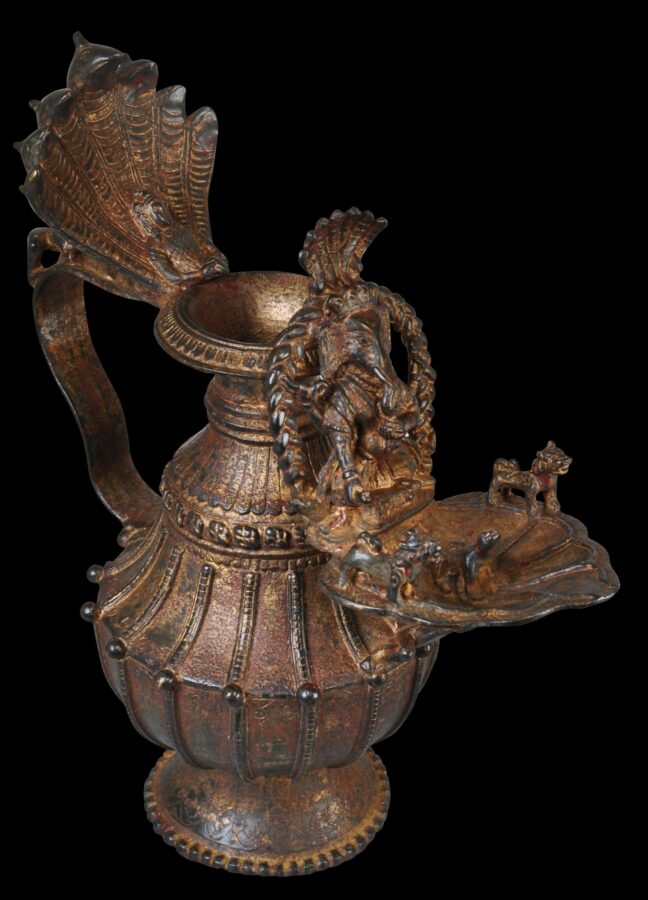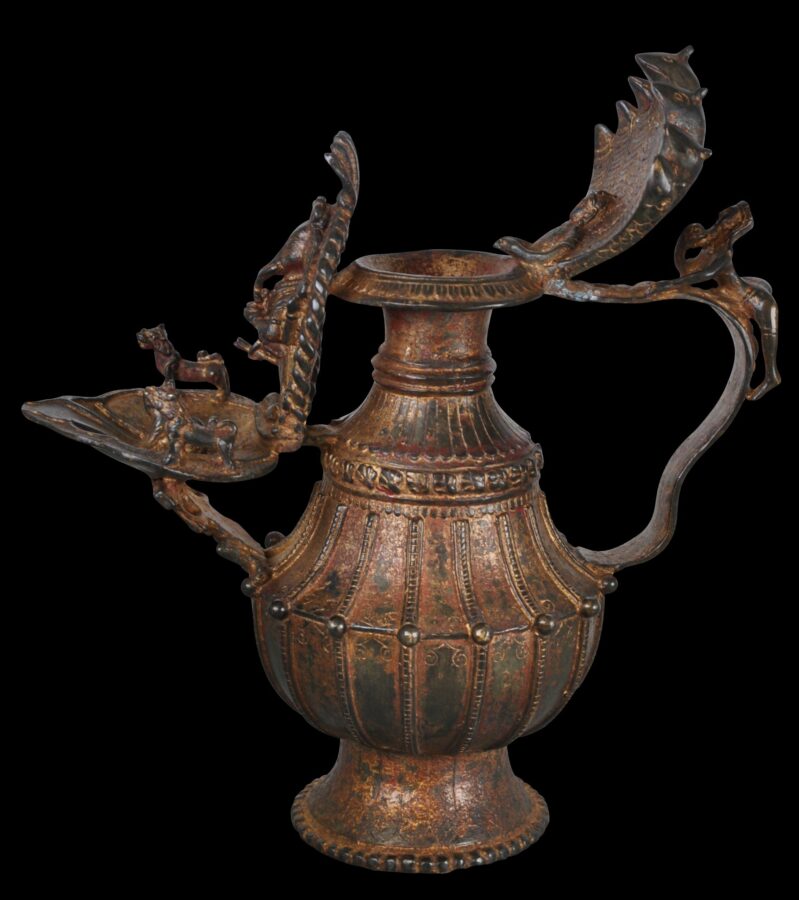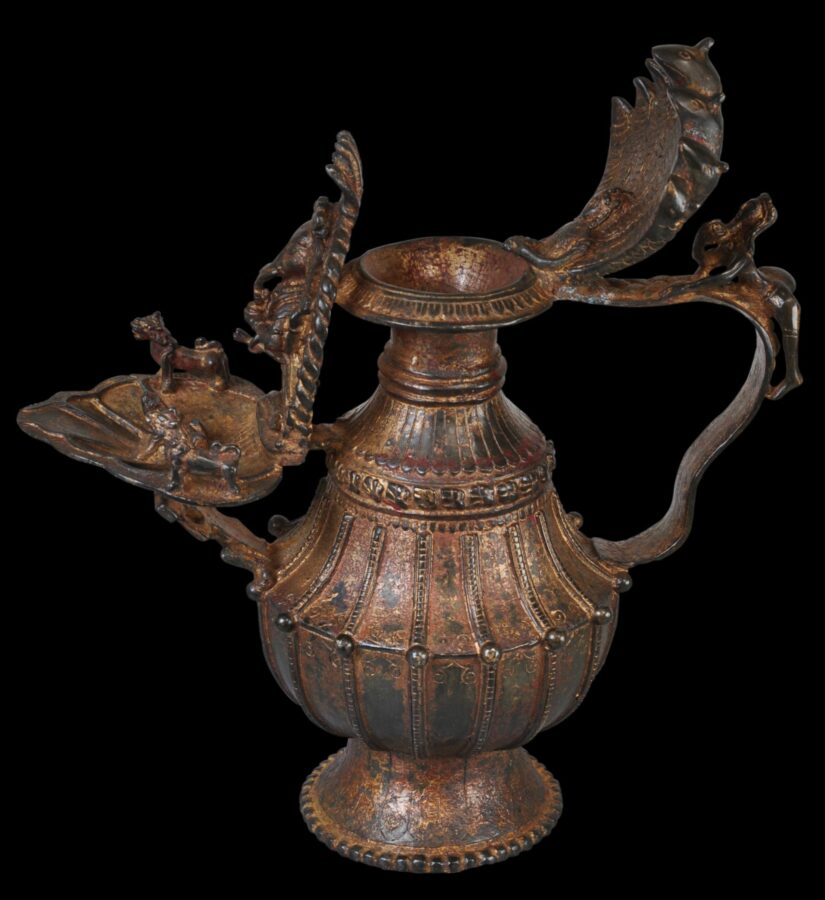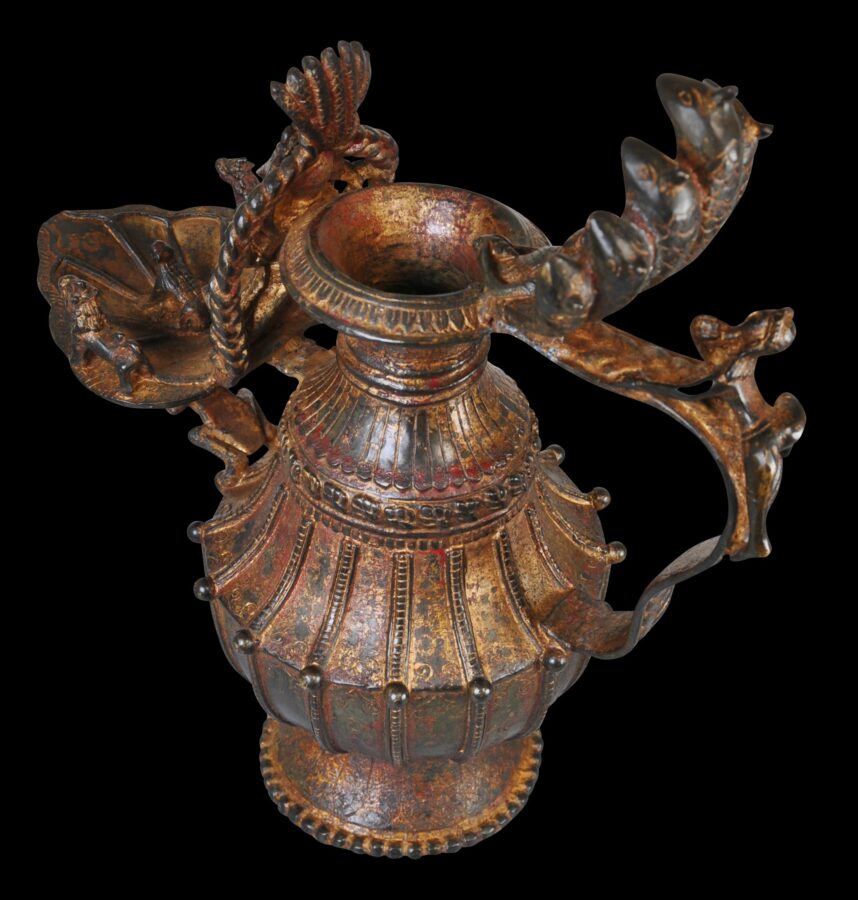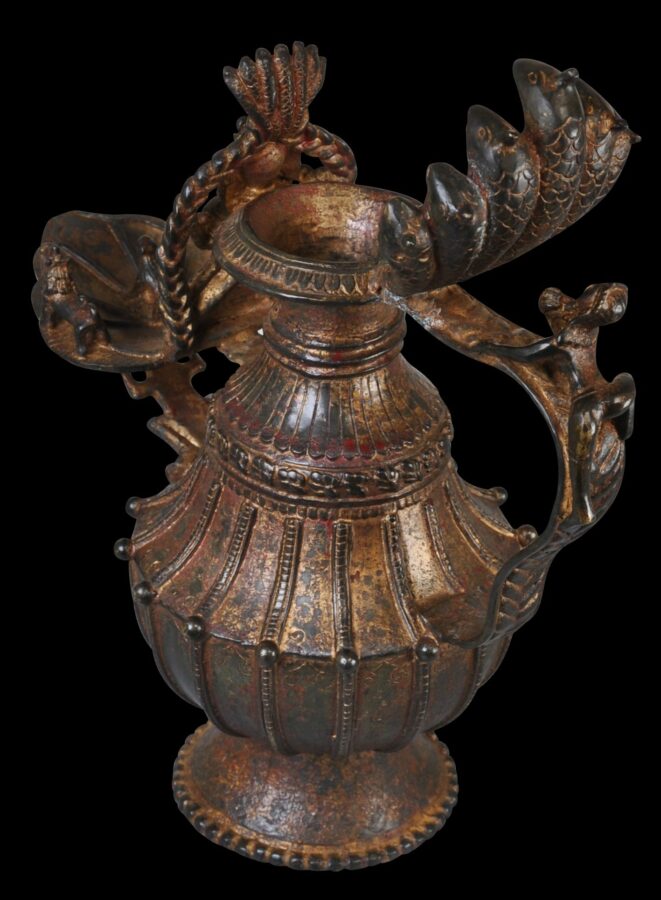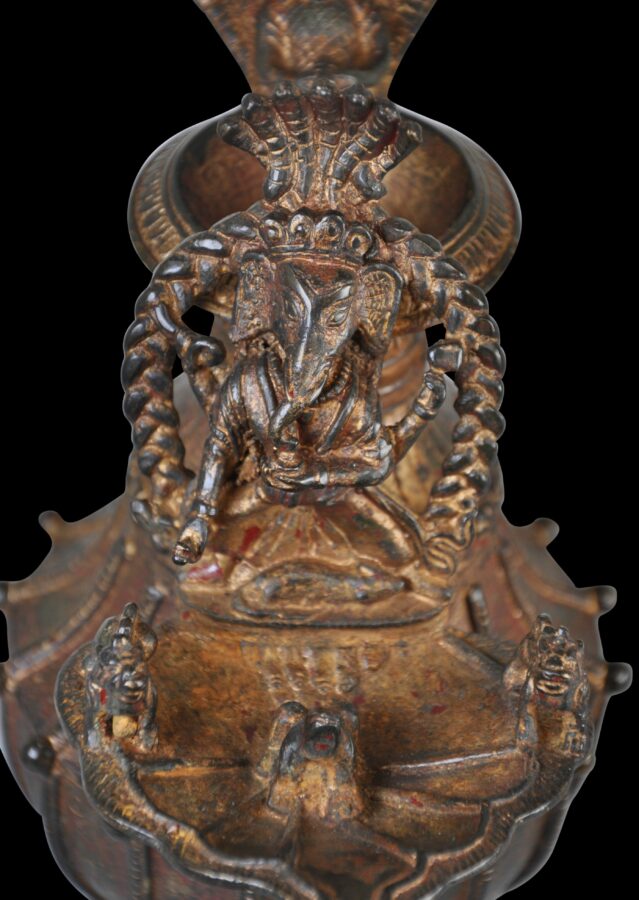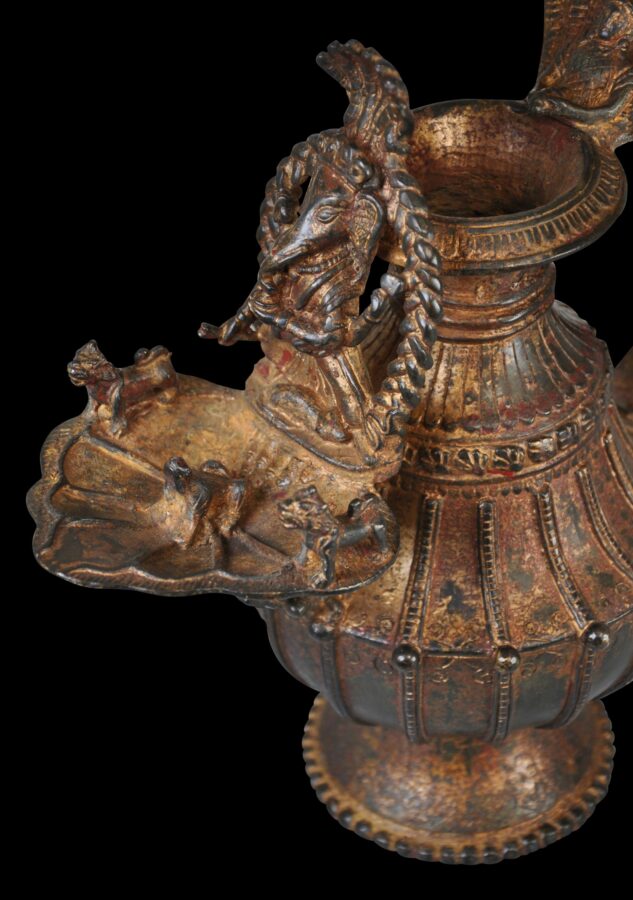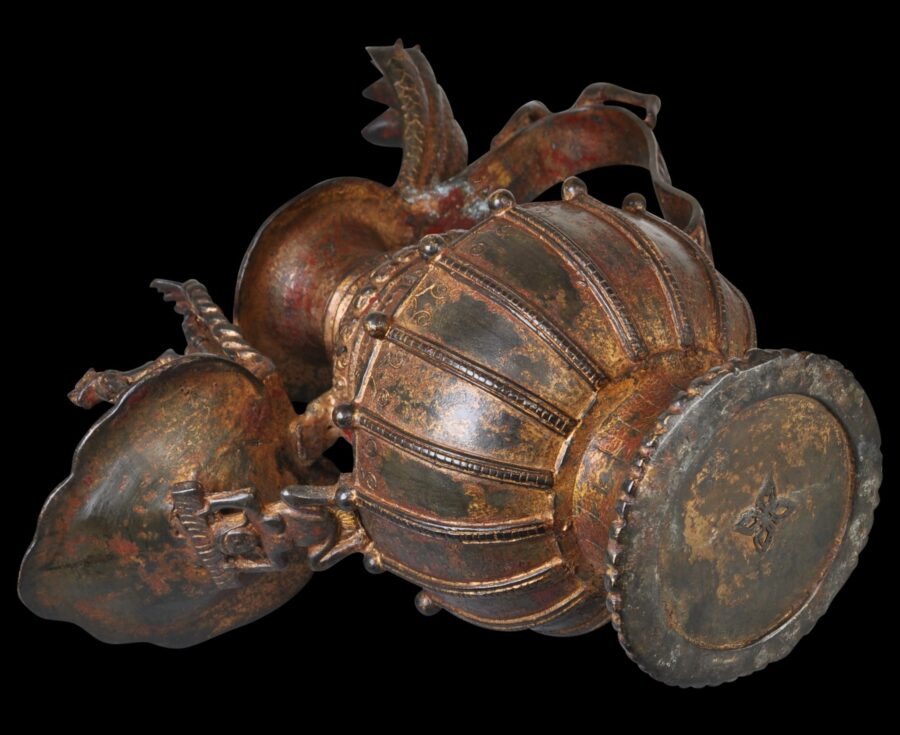Sukunda lamps are indigenous to the Newar people of the Kathmandu Valley. They are used for a wide range of religious and social purposes. The vase or pot part of the lamp is used for storing the oil – usually mustard oil produced locally. This is ladled out and put on the shallow dish that projects from the front of the vase, where a wick is burned using the oil as fuel.
This example is among the finest sukunda that we have encountered. The entire vessel originally was gilded (gold plated) but this has worn leaving a warm, pleasing patina.
The vase part is of cast and chiselled bronze. The baluster-form body and flared foot are repoussed with ribs to emulate lotus petals.
The shoulder of the vase is decorated with further petal motifs.
The handle is cast and engraved and in the form of a seven-headed cobra. Nestled within the hooded canopy is an image of a deity, probably Vishnu, wearing a tall crown.
The lamp dish (the dalupa) has been beautifully cast as a leaf. Two dog-like creatures are on either side and a frog-like creature sits in the well of the dish. The pierced backing plate comprises a four-armed image of Ganesh, cast in relief.
The underside of the base is decorated in relief with a four-petalled flower.
A related example is illustrated in Bazin (2021, p. 206).
The lamp dish is supported underneath by a pierced strut cast as a human-type figure. A similar figure crawls along the top of the handle.
Sukundas play an important role in most Newar rituals, including birth, marriage and death rituals. The larger examples – those around 30cm in height – are reserved for marriage ceremonies. They are carried in the processions from the groom’s to the bride’s house and the return procession when the bride leaves her parent’s home. The example here would have been commissioned by a particularly wealthy Newar family.
This sukunda has an excellent patina. This is a splendid and highly decorative piece.
References
Bazin, N., et al, Nepal: Art de le Vallee de Katmandou, Musee National des Arts Asiatiques – Guimet, 2021.
Friedman, M.S., Nepalese Cast Religious and Cultural Lamps, Pilgrims Publishing, Volume 2, 2005.
Lama, M.N., Ritual Objects & Deities: An Iconography on Buddhism & Hinduism, Lama Art, 2003.
Pal, P., Art of Nepal, Los Angeles County Museum of Art, 1985.
Sakya, Jnan Bahadur, Short Description of Gods, Goddesses and Ritual Objects of Buddhism and Hinduism in Nepal, Handicraft Association of Nepal, 2000.


